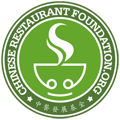Chinese hot pots just bubbling over
State Side
By FOO YEE PING
Those famous Golden Arches are available in 13,700 locations throughout the United States. But the very symbol of fast food isn’t what eating in America is all about with Chinese restaurants continuing to grow in strength and menu size.
IN a country where there is a Ronald McDonald for every 21,000 Americans, the story of McDonald’s is that of a fast-food nation.
Similarly, Burger King which has 11,000 outlets throughout the United States and Wendy's, the number three hamburger chain, with 7,000 locations.
But even put together they are outnumbered by Chinese restaurants, which total 43,139, according to Chinese Restaurant News (CRN), a monthly publication distributed to all such eateries in 50 states.
“The number of Chinese restaurants has increased almost 150% since the late 1990s. Many of the recent ones are operated by newly immigrated families,” said CRN editor-in-chief Betty Xie.
California has the highest number of Chinese restaurants at 7,697. The Golden State’s 4.5 million Asians, or 12.4% of its population, is the biggest Asian population in the United States.
New York is number two on the list with 4,902 Chinese restaurants.
“The data is based on our national subscription list,” said Xie.
Almost 87% of the California-based publication is sent out to family-run restaurants.
The Chinese-language CRN, started in 1995, lays claim to being the largest publication focussing solely on American-Chinese restaurants in North America.
According to Xie, there is a huge array of Chinese food available in big cities like New York and Los Angeles.
Regulars on the menu would be authentic Cantonese fare such as dim sum, claypot servings like pork belly with May-Cai preserves, thousand-year eggs and roast duck rice congee, steamed fish with ginger and scallion, winter melon and pork bone soup, bitter melon and stir-fried beef.
“Also available are regional dishes like Peking Duck (Beijing Pian Pi Ya), Shanghai Shiao-Long soup dumplings, Sichuan Dan-Dan Mein (cold noodle bowl), Sichuan Ma-La (peppery spicy) hot pot, DongBei Jiaozi (Mandarin boiled dumplings) and Beijing Lamb hot pot,” she added.
Xie said Sichuan and Cantonese cuisine would continue to be popular as it was the most recognised Chinese food among the American public.
Shanghainese delicacies are getting very popular, too.
“One major reason is the rise of Beijing and Shanghai on the global investment map. These cities are experiencing fast economic growth and their cuisine is getting popular outside of China.”
What is the next trend in Chinese food here?
“More Chinese restaurants are becoming aware of fusion food and there are more high-end fine dining Chinese restaurants now compared with 20 years ago.”
Xie believes there will also be more family-operated chains and restaurants that are run on a bigger scale.
She noted that take-outs and food court units were not so popular 10 years ago.
“However, we have seen great success in the supermarket food counter offering family food packages like take-home and reheat meals. Some call it the ‘home meal replacement’ trend.”
But despite the wide availability of Chinese food, it is not the most popular vote among American diners seeking a taste of Asia.
Japanese food is.
“Sushi, especially, succeeds in its artful presentation, simple food ingredients and consistent standard in taste and quality. All these factors need to be established in Chinese restaurants in the United States,” Xie explained.
She said that many American-Chinese restaurateurs had noted the “trade secrets” of Japanese eateries.
“They have made culinary trips to China to bring back know-how.”
But perhaps there is another setback, as pointed out by Nina and Tim Zagat, founders of the popular restaurant guide that bears their name.
“Getting ingredients is no longer an issue. Instead, the principal obstacle to improving Chinese fare here is the difficulty in getting visas for skilled workers since Sept 11,” they said in a June article in The New York Times.
They also observed that while the quality of other Asian cuisine such as Korean, Thai and Vietnamese had soared, “the Chinese restaurant experience is the same tired routine – unimaginative dishes served amid dated, pseudo-imperial décor.”
Nevertheless, it is still chow down time in America.






